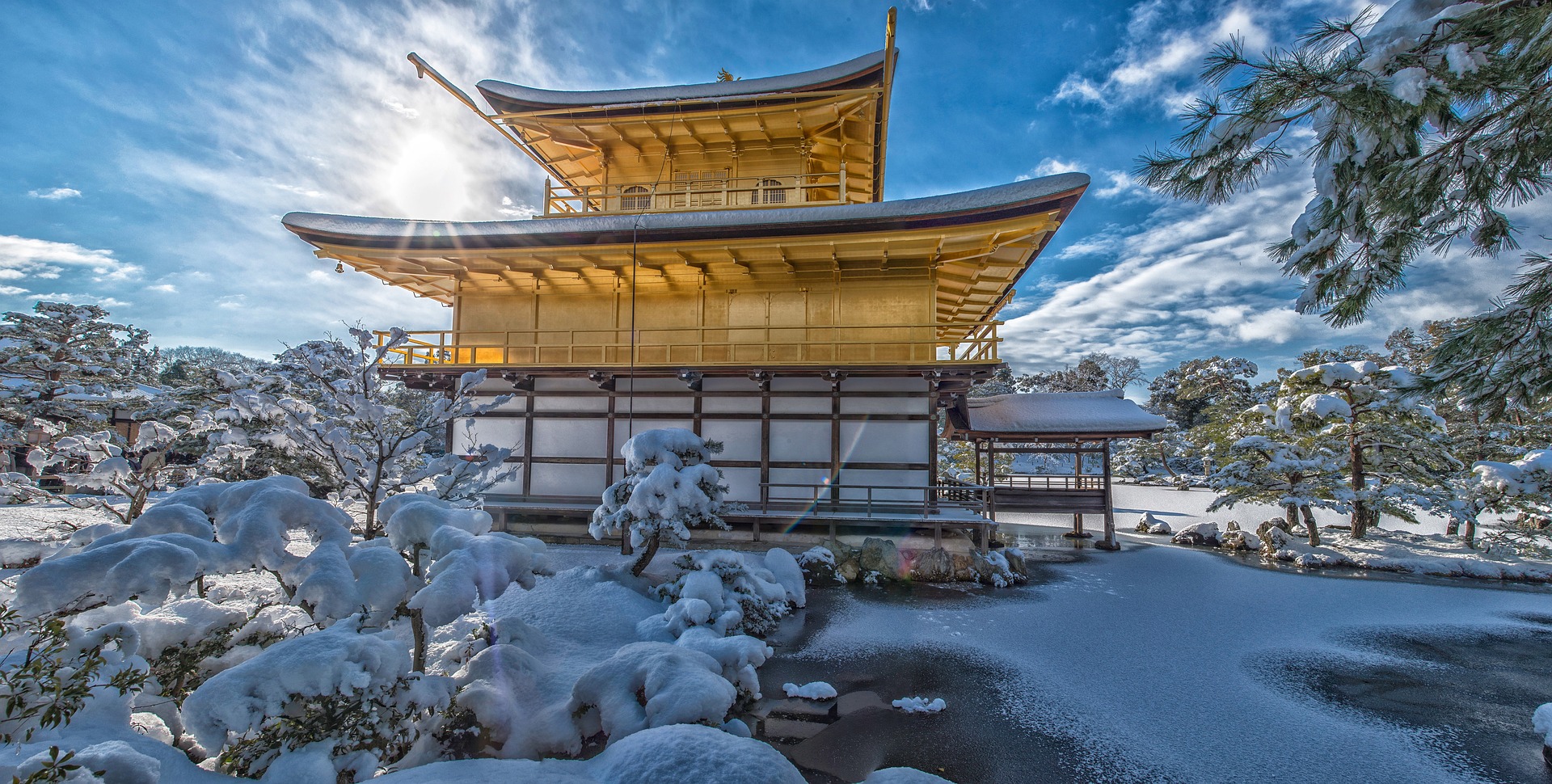Kinkakuji (Golden Pavilion) Introduction
Kinkakuji (金閣寺), also known as the Golden Pavilion, is a breathtaking Zen temple located in northern Kyoto. Famous for its top two floors completely covered in gold leaf, Kinkakuji is not only one of Japan’s most iconic cultural landmarks but also a perfect place to experience traditional Japanese architecture and Zen aesthetics. This guide will provide you with detailed information about this dazzling golden structure, helping you plan an unforgettable visit to Kinkakuji.
Key Information
- Location: 1 Kinkakujicho, Kita Ward, Kyoto, Japan
- Built: 1397 (current structure rebuilt in 1955)
- Main Feature: Three-story building with the top two floors covered in gold leaf
- Architectural Style: Blend of Heian era Shinden-zukuri, Samurai house style, and Zen style
- UNESCO World Heritage Site: Listed as part of the “Historic Monuments of Ancient Kyoto” in 1994
Golden Pavilion Historical
Kinkakuji was originally built as a retirement villa for Ashikaga Yoshimitsu, the third shogun of the Muromachi period. Completed in 1397, Yoshimitsu named it Kitayama-den. Following Yoshimitsu’s wishes, it was converted into a Zen temple of the Rinzai sect after his death in 1408, with its official name becoming Rokuonji.
Throughout its long history, Kinkakuji has been burned down several times, including twice during the Onin War. The most recent incident was in 1950 when it was set on fire by a fanatical monk. The current structure was rebuilt in 1955, perfectly replicating the original design and continuing the legacy of Kinkakuji.
Main Attractions
1. The Golden Pavilion
The Golden Pavilion is the centerpiece of the temple complex, a three-story high building overlooking the Mirror Pond. Each floor represents a different style of architecture:
- First Floor: Built in the Shinden style of Heian Period palace buildings, with natural wood pillars and white plaster walls.
- Second Floor: Built in the Bukke style used in samurai residences, with its exterior completely covered in gold leaf.
- Third Floor: Built in the style of a Chinese Zen Hall, gilded inside and out, and topped with a golden phoenix.
While visitors can’t enter the pavilion, the statues of Shaka Buddha and Yoshimitsu can be glimpsed through the open doors from across the pond.
2. Kyoko-chi (Mirror Pond)
The Mirror Pond surrounding the Golden Pavilion not only provides perfect reflections of the structure but is also the best spot to view the entire landscape. The pond is dotted with small islands and beautifully shaped pine trees, creating a classic Japanese garden scene.
3. Former Head Priest’s Quarters
Although not open to the public, this building is known for its painted sliding doors (fusuma), showcasing traditional Japanese interior decorative arts.
4. Anmintaku Pond
This small pond is said to never dry up, symbolizing the eternity of life. The statues near the pond where visitors throw coins for good luck are a popular spot.
5. Sekkatei Teahouse
Added during the Edo period, this teahouse embodies the essence of Japanese tea culture. While not open to the public, its elegant exterior is worth admiring.
Best Time to Visit
Kinkakuji is open year-round, with each season offering its unique charm:
- Spring (Mar-May): Cherry blossoms in bloom, creating picturesque scenes.
- Summer (Jun-Aug): Lush greenery with the Golden Pavilion shimmering in the sunlight.
- Autumn (Sep-Nov): Fall foliage season, with gold and red hues complementing each other.
- Winter (Dec-Feb): Occasional snowfall creates a magical silver-and-gold landscape.
It’s advisable to visit soon after opening or before closing to avoid peak crowds.
Getting There
From Kyoto Station:
- Take Kyoto City Bus number 205 directly to Kinkakuji, about 40 minutes, 230 yen.
- Or take the Karasuma Subway Line to Kitaoji Station (15 minutes, 260 yen), then take a taxi (10 minutes, about 1500 yen) or bus (numbers 204 or 205, 10 minutes, 230 yen) to Kinkakuji.
Hours and Admission
- Open: Daily from 9:00 to 17:00
- Closed: No closing days
- Admission: 500 yen for adults
Visitor Tips
- Purchase tickets in advance to save time queuing.
- Respect the temple environment and follow photography restrictions.
- Wear comfortable walking shoes as there are several steps in the complex.
- After your visit, enjoy matcha and Japanese sweets at the tea garden near the exit.
- Don’t miss Fudo Hall near the exit, housing a statue of Fudo Myoo said to be carved by Kobo Daishi.
Golden Pavilion Official Website
Conclusion
Kinkakuji is not just a building; it’s a perfect blend of Japanese culture, history, and aesthetics. Whether you’re a history buff, architecture enthusiast, or photography lover, Kinkakuji offers an unforgettable experience. Its golden splendor reflects not only the glory of the past but also the timeless allure of Japanese culture.
When visiting Kyoto, Kinkakuji is an absolute must-see. Plan your trip and experience the extraordinary charm of this golden wonder for yourself!
